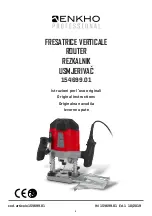
<kind>
Possible values are as follows:
•
Ca → {data} correspond to the RADIUS CA
•
Cert → {data} correspond to the SPWF04S certificate
•
Key → {data} correspond to the SPWF04S key
<size>
Data size in bytes. Data can be transferred in PEM (textual) or
in DER (binary) format.
6.32
AT+S.TLSCERT
To Manage TLS certificates in the Module Memory. Note that if Flash is empty, the TLS layer will look for files in
the filesystem with the default names of “tls.cert” and “tls.key” for client certificate and key, while CA certificates
need filenames corresponding to their Subject Key Identifier (e.g.:
"C07A98688D89FBAB05640C117DAA7D65B8CACC4E.ca"). Note also that depending on the type of certificate
format loaded (DER or PEM), the subject key identifier is automatically found by the module itself. The “auth”
parameter is only required when loading PEM format.
Usage:
AT+S.TLSCERT=content,<option><cr>
AT+S.TLSCERT=<kind>,<size><cr>{data}
Parameters:
<option>
When the value is equal to 1, the command lists the
certificates and key stored in the Flash memory. When the
value is equal to 2, the command removes the certificates and
keys stored in the Flash.
<kind>
Possible values are as follows:
•
Ca → {data} correspond to the Peer CA
•
Cert → {data} correspond to the SPWF04S certificate
•
Key → {data} correspond to the SPWF04S key
•
Auth → {data} peer’s CA Authority Key ID
<size>
Data can be transferred in PEM (textual) or in DER (binary)
format.
6.33
AT+S.WPS
Initiate a WPS exchange.
Usage:
AT+S.WPS=<mode><cr>
Parameters:
UM2114
AT+S.TLSCERT
UM2114
-
Rev 3
page 24/66
















































